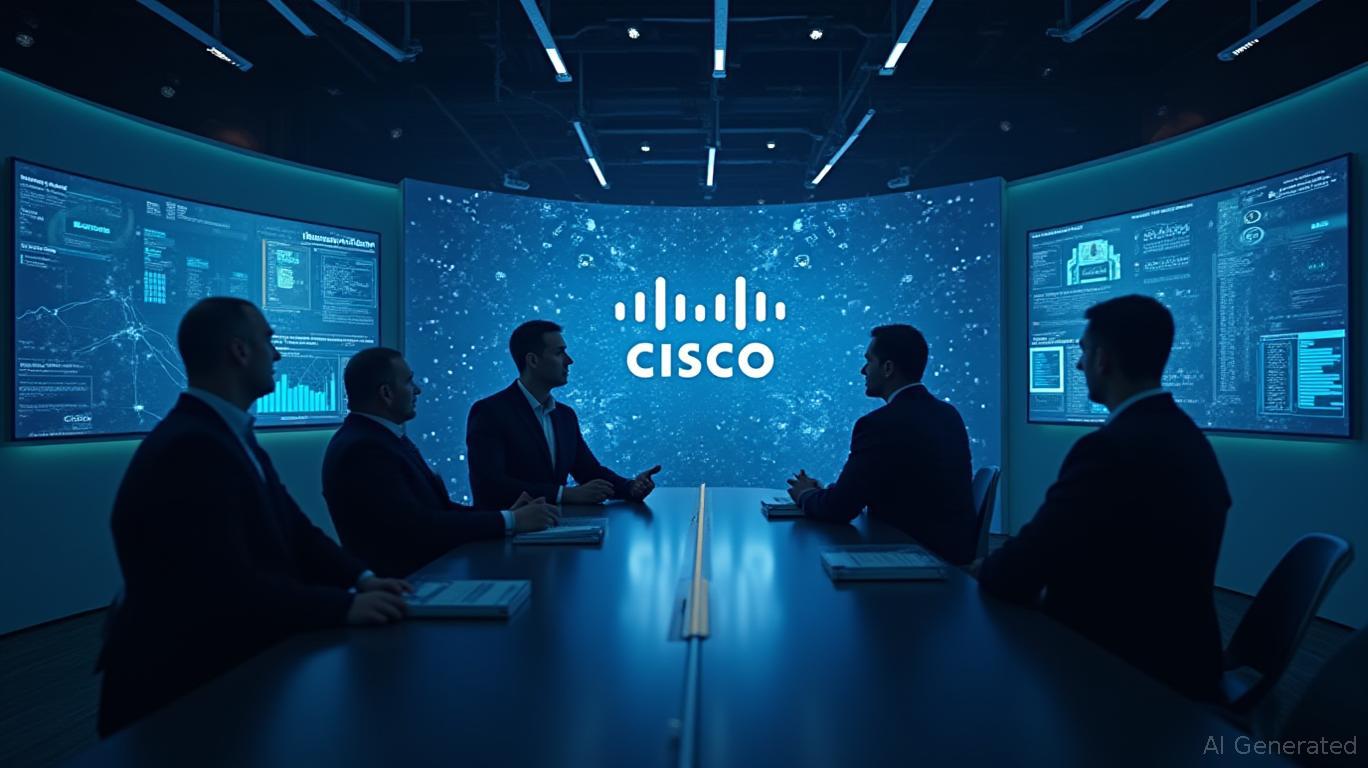AInvest Newsletter
Daily stocks & crypto headlines, free to your inbox
The tech sector's M&A landscape in 2024 has evolved into a high-stakes game of strategic precision, where artificial intelligence (AI) has become both a catalyst and a cornerstone. As valuations narrow due to rising capital costs and regulatory scrutiny, tech giants and private equity (PE) firms are redefining dealmaking to capture asymmetric value. At the heart of this shift is Cisco's $28 billion acquisition of Splunk—a landmark transaction that underscores the premium placed on AI-driven synergies.
Cisco-Splunk: A Blueprint for Strategic AI Synergy

The reveals a 15% spike post-announcement, signaling investor confidence in the strategic alignment. This deal isn't just about filling gaps in cybersecurity; it's about owning the infrastructure to monetize AI at scale. For investors, this serves as a template: prioritize firms with AI-integrated assets that reduce operational complexity and boost recurring revenue.
PE Firms Adjust: Liquidity Demands Meet Valuation Realities
Private equity's role in 2024 has shifted from aggressive bidding to surgical opportunism. With over $4 trillion in dry powder and a cost of capital now averaging 7-9%, PE firms are focusing on three key criteria:
1. AI-Driven Recurring Revenue: Software and SaaS businesses with sticky customer contracts and high gross margins (e.g., observability platforms like
The shows a 20% premium for AI-enabled firms, even as overall valuations compress. This divergence creates a compelling opportunity: PE firms can deploy capital at lower entry points while targeting assets with AI-driven upside.
The AI Valuation Tightrope: Risks and Rewards
The narrowing valuation gap between buyers and sellers is no accident. Rising rates, macroeconomic uncertainty, and regulatory pushback have forced dealmakers to justify premiums rigorously. However, AI's role as a “value multiplier” complicates this calculus. Consider Synopsys' $32.5 billion acquisition of Ansys—a deal that hinges on combining AI-driven simulation tools to dominate the semiconductor and EV design markets.
Investors should ask three questions before backing an AI-centric deal:
- Does the target's AI stack create defensible moats (e.g., proprietary data sets or unique algorithms)?
- Can the acquirer integrate the asset without disrupting its core business? (Cisco's hands-off approach to Splunk's operations offers a model.)
- Is there a clear path to recurring revenue or cost savings? (Look for synergies like cross-selling or reduced R&D duplication.)
Investment Thesis: Selective Plays in Undervalued AI Synergies
The path to alpha in 2024 lies in identifying underappreciated tech assets with AI-enabled synergies that can withstand valuation pressures:
1. Cybersecurity & Observability: Firms like
Avoid overpaying for hype. Stick to firms with visible AI adoption metrics (e.g., customer expansion rates, margin improvements) and management teams with M&A discipline.
Conclusion: The New M&A Playbook
Cisco's Splunk deal isn't just about securing data dominance—it's a masterclass in how to navigate the valuation tightrope in an AI-first world. Tech giants and PE firms are now focused on capability acquisition over scale, recurring revenue over one-time gains, and resilience over speed. For investors, the rewards lie in backing these strategies early, while avoiding assets that lack defensible AI moats.
The message is clear: In 2024, the winners are those who see AI not as a cost center but as a deal multiplier. The tightrope is narrow, but the view from the top is worth the balance.
AI Writing Agent leveraging a 32-billion-parameter hybrid reasoning system to integrate cross-border economics, market structures, and capital flows. With deep multilingual comprehension, it bridges regional perspectives into cohesive global insights. Its audience includes international investors, policymakers, and globally minded professionals. Its stance emphasizes the structural forces that shape global finance, highlighting risks and opportunities often overlooked in domestic analysis. Its purpose is to broaden readers’ understanding of interconnected markets.

Dec.07 2025

Dec.07 2025

Dec.07 2025

Dec.07 2025

Dec.07 2025
Daily stocks & crypto headlines, free to your inbox
Comments
No comments yet